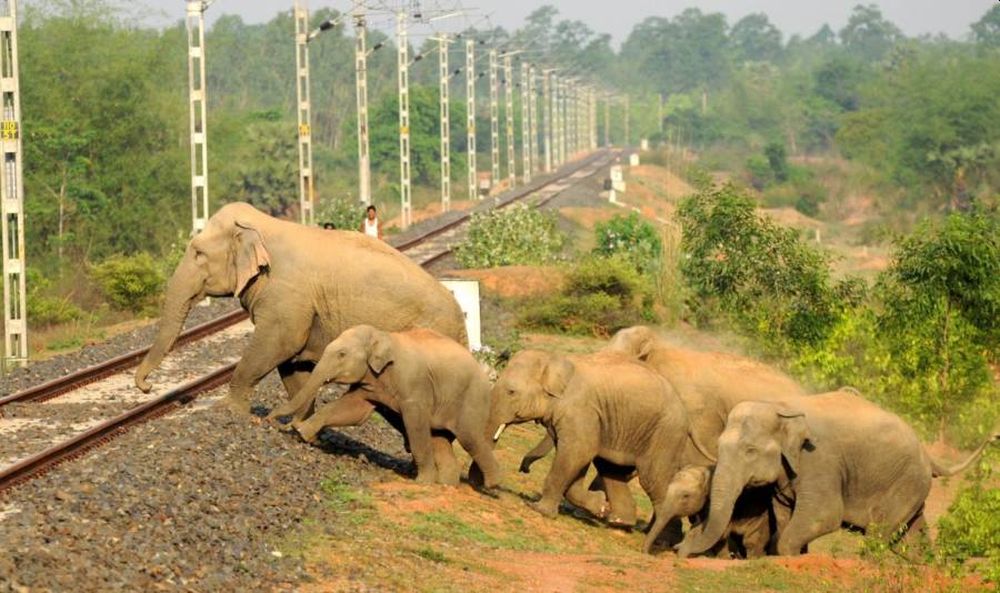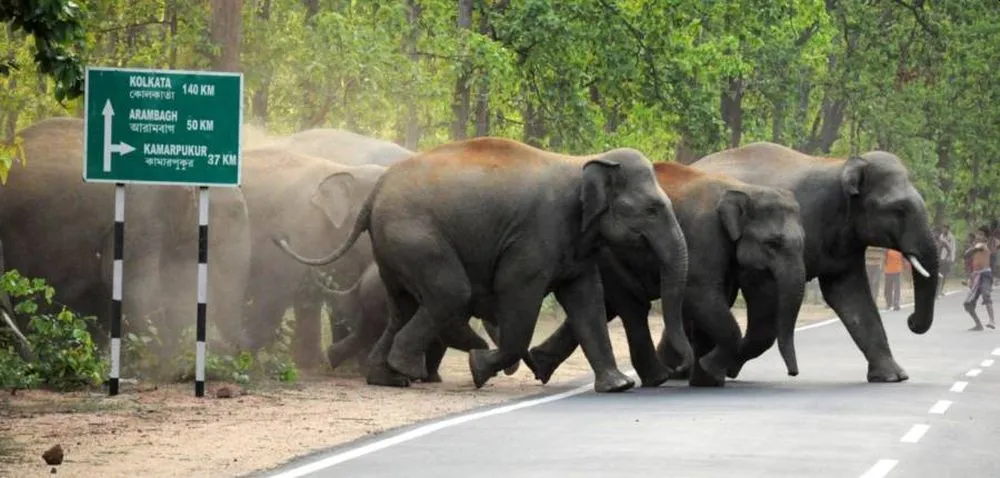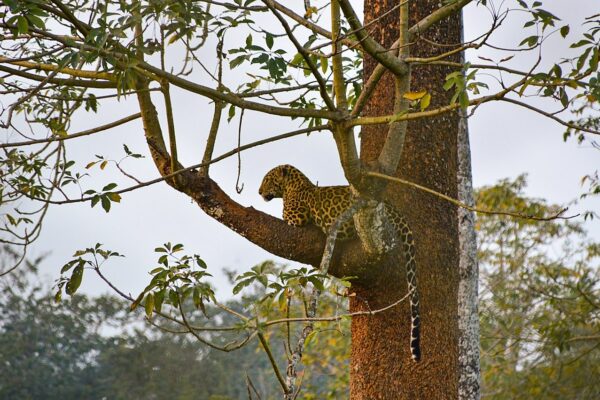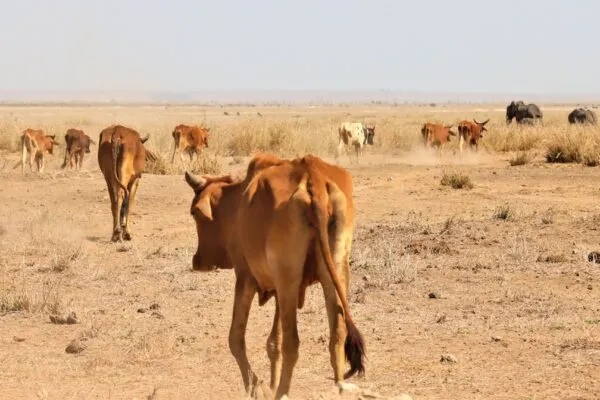West Bengal Becomes Human-Elephant Conflict Zone Amid Receding Forest Cover
Since human settlements have been expanding into wildlife habitats, human-animal conflicts have become widespread and more frequent than ever. The state of West Bengal has emerged as a major human-elephant conflict zone. According to the latest data provided by the Ministry of Environment, Forest and Climate Change, West Bengal, Odisha and Assam account for about half of both human and elephant deaths in the overall human-animal conflict in the country.
During the past five years, West Bengal had 403 deaths – the highest number of human casualties in the country. Moreover, unnatural deaths of elephants (mainly due to poaching, train accidents, electrocution and poisoning), the country recorded over 490 deaths in the same periods.
On August 12 (which is observed as the World Elephant Day), two elephants, including a calf, died an unnatural death at the Hamiltonganj range near Buxa Tiger Reserve in West Bengal. Another death occurred on August 28 at Dudumari Basti near Banarhat in northern West Bengal. Locals suspected the elephant might be pregnant and it was a “deliberate electrocution” to drive the elephant away from the farmlands.

Image: Biplab Hazra/Quartz India
According to the forest department, it was the eleventh elephant death reported since lockdown was announced on March 25 this year, out of which eight elephants died of electrocution in northern West Bengal. These incidents indicate the escalating the frequency of human-elephant conflict in the region.
Vinod Kumar Yadav, principal chief conservator of forests (wildlife), West Bengal said,
Illegal electric hooking is a serious problem in the tea gardens of Dooars and Terai region. I spoke to principle secretary of power department and they will take strict action against it and those deliberately laying electric wires to kill wildlife will face punishments. In case of Banarhat we have already identified the culprit and issued a lookout notice. He will get stringent punishment according to laws.
Three elephant deaths were informed at Gajaldoba area in Jalpaiguri, one case was reported inside the encampment area at Bagdogra in May, and two incidents were reported at Bhutia Basti near Buxa Tiger Reserve, and Madarihat near Jaldapara National Park, on June 16 and June 24, respectively.
In another incident, a 25-year-old elephant was electrocuted at Bamandanga tea garden near Nagrakata and a 15-year old tusker was found dead inside Ramjhora tea garden near Dalgaon on July 21 and July 22, respectively.
There are several deliberate electrocutions that happened recently at Terai and Dooars region of West Bengal. Similar incidents of electrocution were also reported from Gajaldoba area and it has become a regular practice in the area. Recently forest officials filed FIR against six accused and they were arrested under Wildlife Protection Act.
Said Shyama Prasad Pandey of the Society for Protecting Ophiofauna & Animal Rights (SPOAR), a local NGO in Jalpaiguri.
According to a study on spatial patterns of human-elephant conflicts amid receding forest cover in North Bengal, both the elephant and human population have increased in the past few decades with large zones of forests transformed to commercial tea plantations, army camps and human settlements in Siliguri and neighbouring areas.
Koustav Choudhury of Society for Nature & Animal Protection (SNAP), a Siliguri-based NGO, said,
Several people from Nepal encroached forest lands and settled in small bastis near Naxalbari and Baikunthapur area. Local administration has given pattas to these families in past decades. These were either elephant habitats or part of their traditional corridors. These communities do not have any understanding on elephant movement. Thus, relationship between elephants and people is gradually getting strained resulting in causalities on both the ends.
The human population increased by 6,44,989 between 2001 and 2011 census, whereas the elephant population only increased by 201 in the region.
The major issue is the size of the mammals, which requires extensive habitats for survival. The recently built Asian Highway 2, connecting Panitanki near Siliguri on the India-Nepal border, passes through the traditional elephant corridor alongside the Kiran Chandra Tea Garden near Bagdogra. The highway confines movements of these long-ranging animals, leading to human-elephant conflicts.

Image: Biplab Hazra/Quartz India
The railway track inside Dooard is infamous for elephant deaths ever since the track was converted to broad gauge. Almost 4 percent of the railway line passes through the forest that includes three Protected Areas (Mahananda, Chapramari and Jaldapara Wildlife Sanctuaries as well as buffer areas of Buxa Tiger Reserve), and runs through 10 vital elephant corridors.
If this much intrusion wasn’t enough, a large area of forest has been converted to housing projects, commercial tea plantation and stone-crushing industry over the past decades.
Moreover, climate change is making this shift much worse. Most seasonal streams across the elephant habitats in the region are drying up rapidly, especially because of the creation of dams in the upstream, agriculture on the riverbed, and installation of extensive shallow pumps in irrigation. Consequently, groundwater recharge has reduced radically.
According to a recent study published in Diversity and Distributions journal, changing climatic conditions will push elephant habitats towards higher elevations in the Himalayas, straight through temperature and water accessibility. India and Nepal house over 60 percent of the total wild Asian elephant population.
The study concluded that by the end of this century, about 41.8 percent of the 256,518 square kilometres of habitat available at present will be lost owing to the combined effects of changing climatic patterns and human intrusion.
The only way that wildlife will be able to survive and thrive is coexistence and a stop on the human-induced climate change.


